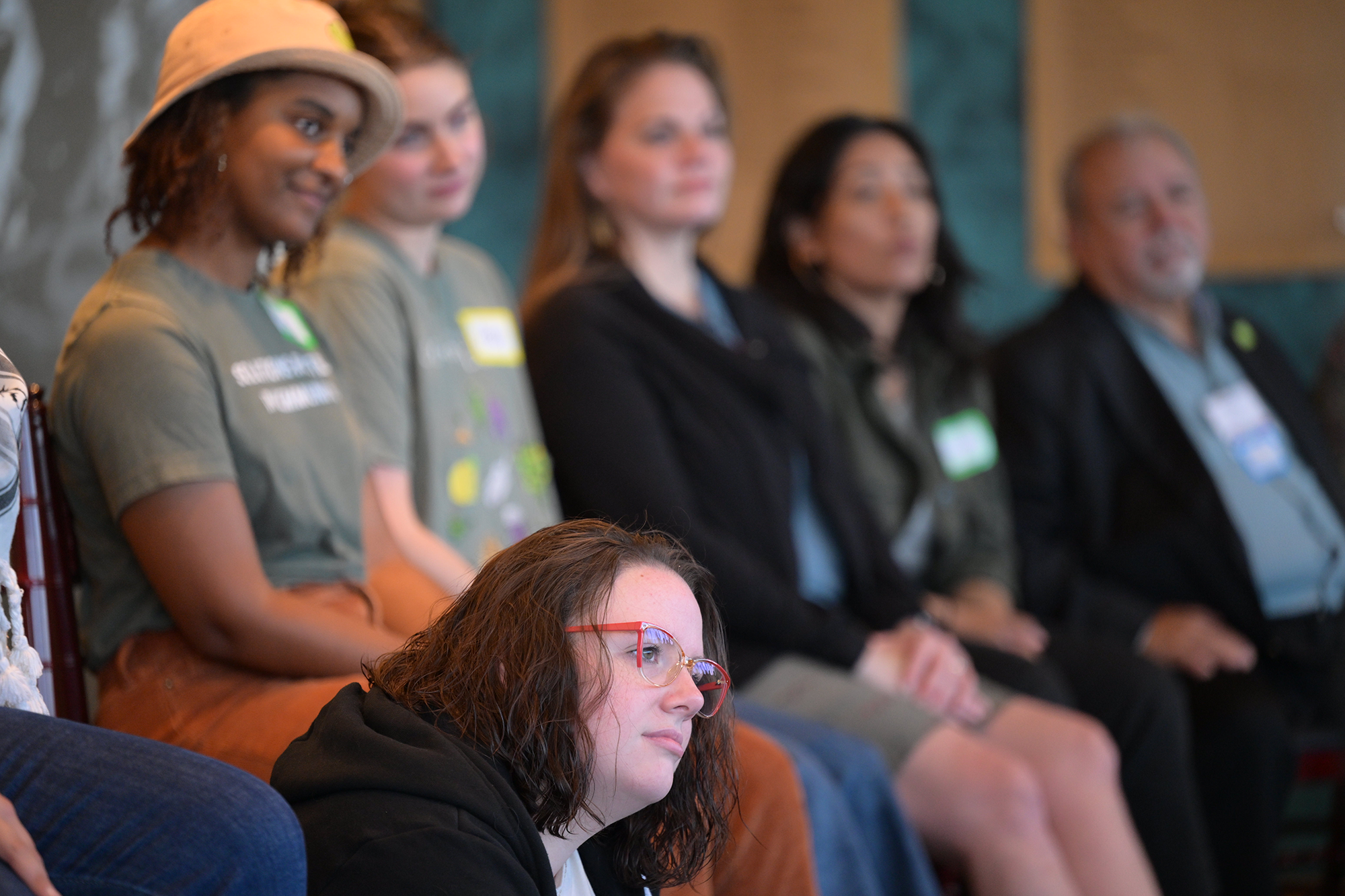
In this week’s Principle 6 Newsletter, Mike Mercer says it’s hard to imagine how a cooperative could form without its member-owners sharing a deeply-rooted sense of solidarity. Indeed, “solidarity” caps the International Cooperative Alliance’s list of co-op values.
“Solidarity is an acknowledgement that people are bound together somehow in pursuit of common objectives,” Mercer writes. Individual co-ops and co-op sectors demonstrate solidarity every day. But what would global co-op solidarity look like, and what strategic opportunities might it present?
While you’re thinking about “cooperation among cooperatives,” take a moment to consider how you and your cooperative practice this principle. NCBA CLUSA is on a mission to document Principle 6 collaborations across the country so we can identify trends, document best practices and share this knowledge with you—our fellow cooperators!
Share your example of Principle 6
Principle 6 Newsletter – The Flavors of Solidarity
December 22, 2021
…unity (as of a group or class) that produces or is based on community of interests, objectives, and standards. – “solidarity,” Merriam-Webster Dictionary
…union or fellowship arising from common responsibilities and interests, as between members of a group or between classes, peoples, etc. – “solidarity,” Collins Dictionary
…an awareness of shared interests, objectives, standards, and sympathies creating a psychological sense of unity of groups or classes. – “solidarity,” Wikipedia
…support by one person or group of people for another because they share feelings, opinions, aims, etc. – “solidarity,” Oxford Learner Dictionaries
Co-operatives are based on the values of self-help, self-responsibility, democracy, equality, equity and solidarity. A flat reading of this statement will give us a laundry list that might give us a warm tingle. We have to go beyond its surface. Values are tools for making life work well, and co-operatives are tools for achieving a mission that serves both its members and much more. We have to bring life and meaning to these value-words in order to make them useful. – Michael Johnson, “The Cooperative Principles, The Common Good, and Solidarity,” Grassroots Economic Organizing, 4-12-12

To many Americans, “solidarity” is known as the Polish labor movement that served as crucial inspiration for the movement against communist oppression in Eastern Europe. Certainly, the bond between the Gdansk shipyard workers under the conditions of those days serves as one of the greatest examples of solidarity writ large in contemporary times. Admiration and respect for their contributions to western society noted, we will not be focusing on Lech Walesa and his colleagues here.
Instead, the present objective is to provoke thought around this unifying (but not uniformly defined) thing called solidarity. As can be seen from the variety of definitions above, there are many flavors and nuances when it comes to the concept of solidarity. According to the International Cooperative Alliance (ICA), solidarity is one of the foundational values embedded in cooperative identity. Said bluntly, any self-respecting co-op should exhibit behaviors in practice that build or strengthen solidarity—whatever that means.
So, as Mr. Johnson suggests, we should “bring life and meaning to these value-words.” To that end, it might be helpful to think of solidarity as coming in several flavors. Perhaps a co-op could/should think of exhibiting solidarity behaviors in several ways:
As Contributor
Most credit unions were formed to strengthen pre-existing solidarity. Workplace, community, religious affiliation and other “common bonds” were written into the early charters. Purpose was tied to advancing the well-being of those who were already affiliated with the “sponsor group.” Branding for the credit union was that of the group that already shared fellowship—the Savannah Seaboard Employees CU or the Big Bethel A.M.E. Church FCU, for example. In fact, it was considered essential that a pre-existing common bond could be demonstrated because character-based underwriting in the early days depended on knowing the borrower and benefiting from a sense of personal responsibility toward the other members—solidarity. In this way, credit unions built additional ties of mutual responsibility, strengthening solidarity within the group.
As Creator
Cabbies are essentially hard-working independent operators. They may belong to a union and their cars might be painted the same color, but when they get behind the wheel, it’s them against all the others for the next fare. The Uber/Lyft transformation changed the game—better technology than the old line cab companies, much improved consumer interface and the enablement of new supply (part-time hustlers). As time went by, Uber and Lyft tightened the screws on revenue share and successfully pushed all of the costs of vehicle ownership to the drivers. Tough times. Solution? Create solidarity where none existed. Form the Drivers Cooperative. Make owner operators out of the drivers—give them a say. Better revenue share and numerous other benefits. The Drivers Cooperative essentially fulfills the role of creating solidarity.
As Collaborator
“Wired Differently” by Vern Dosch might be the best single source of insight for leading a cooperative enterprise. It chronicles the formation and development of National Information Solutions Cooperative (NISC) under Dosch’s leadership. NISC is a significantly impactful technology collaboration with roots in the rural electric co-op community. NISC represents a good example of membership-as-solidarity. The practices and incentives at work in the NISC collaborative experience engender member responsibility toward the cooperative and visa versa.
Some contend that solidarity is the fundamental value that propels co-ops in the expression of Principle 6 (cooperation among co-ops) and Principle 7 (concern for community). Collaborative solidarity is embraced in the pursuit of better value creation for members. The common desire to enhance member well-being creates the incentives for embracing collaborative solidarity. Notwithstanding, the decision to contribute to solidarity in collaboration is a conscious choice, often shrouded in the pragmatic constructs of competitive strategy. Being a co-op doesn’t automatically translate into solidarity with other co-ops. Fortunately, for most, collaborative solidarity is strongly embraced. The question then moves to “which co-ops are my tribe?”
As Evangelist
Doug O’Brien (NCBA CLUSA) and Rose Marley (Co-operatives UK) are among the small number of cooperators who lead national organizations tasked fundamentally with advancing the success of and appreciation for cooperative business organizations. Together with a larger number of “evangelical” co-op leaders, these people believe that the cooperative business structure is an essential organizational framework for advancing opportunity, fairness and inclusiveness in the economy of the future. The prevailing vision is of a grassroots alternative in an economy totally driven by power concentrated in capital and/or government. Co-ops are differentiated as private enterprises (not government controlled) with distributed ownership/control (not capitalist). An old vision, with new opportunity. Mr. O’Brien calls it a”co-op moment.”
A critical starting place for making noticeable progress in fulfillment of this vision is the strengthening of co-op solidarity. Not just solidarity among small credit unions in my state or regional solidarity among RECs in the northwest, but solidarity among all co-ops. That would entail leadership that looks for opportunities to engage in interaction and collaboration with organizations built upon cooperative principles. There would need to be a kinship in strategic opportunity. The cooperative business structure and a more common understanding of cooperative identity among consumers, workers and small businesses would have to be considered as lucrative differentiation in the economy of the future. To embrace this flavor of co-op solidarity would require a long term view. There would not be immediate gratification. In fact, realization of this vision would likely happen in future generations. But as cooperators without quarterly earnings calls, we have the luxury of taking the long view.
Solidarity is an acknowledgement that people are bound together somehow in pursuit of common objectives.
Solidarity is an acknowledgement that people are bound together somehow in pursuit of common objectives. “In what way?” and “to what degree?” are the relevant questions. Because of democratic control and commitment to member well-being in cooperative business structures, it is not hard to see that solidarity matters. Without some form of solidarity, it is hard to imagine how co-ops could form in the first place. And without collaborative solidarity, it is hard to imagine how co-ops could achieve greater impact as consumer expectations change and technologies advance. Finally, to achieve sustainable differentiation, co-ops will need to think big. For that, global co-op solidarity could be the break-out strategy.
It’s a good time for a little introspection. What pre-existing forms of solidarity does your co-op contribute to in some meaningful way? Where are the opportunities to create new bonds of solidarity? What interactions and collaborations put your co-op in solidarity (beyond antiseptic vendor-customer relationships) with other co-ops? Do you (should you) think that there is strategic opportunity in building solidarity with all organizations that are assembled on the framework of the cooperative business model?
How would Lech Walesa advise us to think about solidarity?
Stay tuned,
Mike


